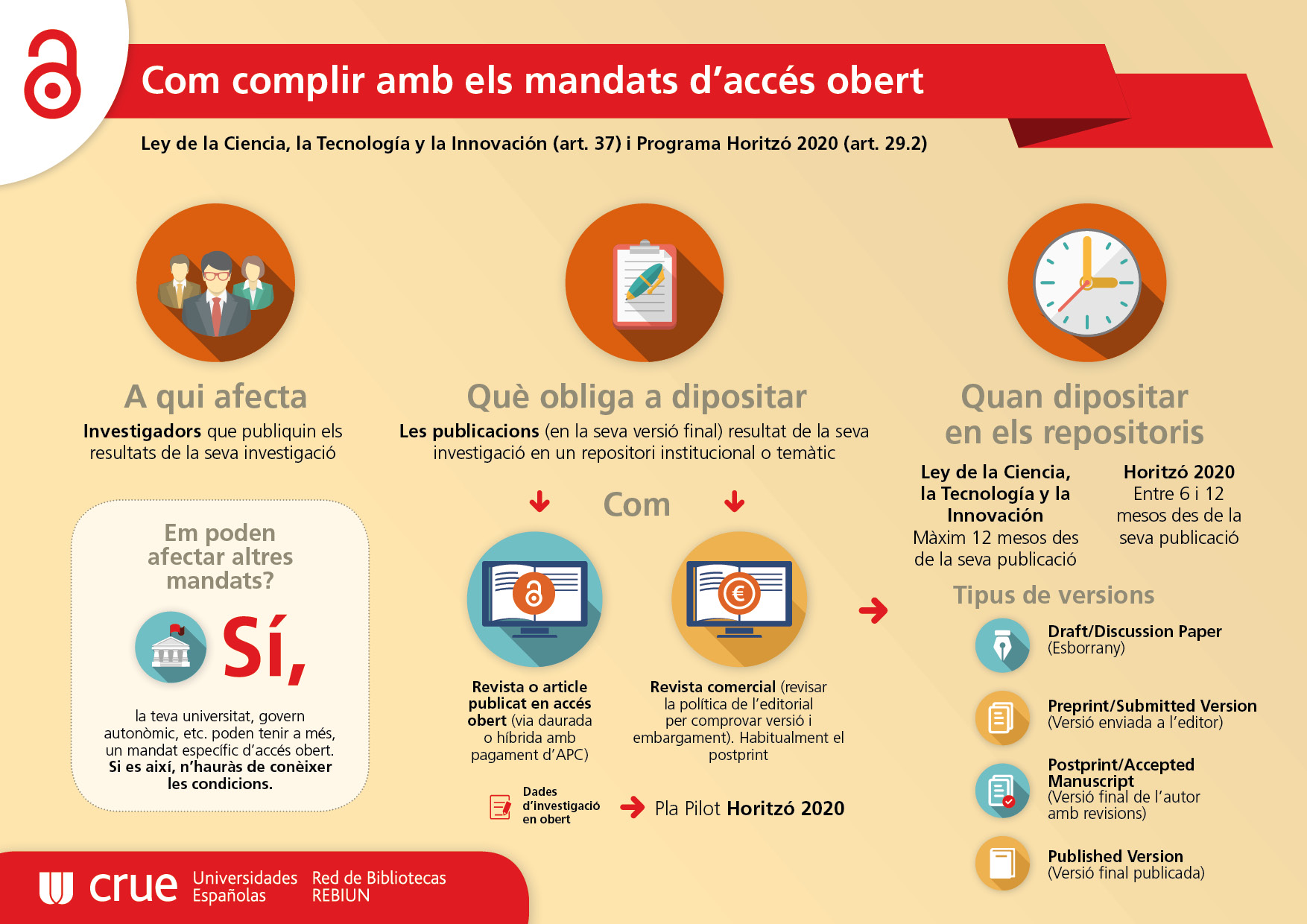The OA movement encompasses not only articles published in journals but also other types of documents or learning objects, such as doctoral theses, images, data, audiovisual documents, etc.
The origins of the OA movement must be found in the social and scientific commitment at an international level, endorsed and ratified in the following statements:
- Budapest Open Access Initiative (2002). Advocates for free access to scientific literature via the Internet, respecting copyright laws.
- Bethesda Declaration (2003). It mentions the archiving of works in open access repositories.
- Berlin Declaration on Open Access to Knowledge in the Sciences and Humanities (2003). It ratifies the two previous statements, openly supports the OA movement and commits institutions to favor and promote this path.
Advantages
- It facilitates free access to scientific research.
- It increases the visibility of the works, the researchers and the institutions they represent.
- It increases the impact, dissemination and dissemination of research.
- It allows authors to retain copyright ownership of their works and establish their terms of use.
- Ensures long-term electronic preservation of research documents.

How to comply with open access mandates
Open access encourages the dissemination of scientific literature on the Internet by allowing publicly funded research to be in the public domain.
The Budapest Declaration establishes two ways to publish in open access, mainly:
- The golden path, which refers to publication in Open Access journals , usually reviewed by experts.
- The green way: which consists of the dissemination in institutional or thematic repositories, the result of an institution's commitment to make visible the production of its professors and/or researchers.
Policies and Regulations
European framework
Open Access is promoted by the European Commission to fulfill one of the five key lines of the European Higher Education Area (EHEA). In this context, the Horizon 2020 Program emerged, which promoted the deposit in institutional repositories of research, reviewed by experts, financed from the public budgets of the EU or member countries (clause 29.2 Grant Agreement). Horizon 2020 was replaced by Horizon Europe, the new research framework program, which obliges to publish openly and to follow the principles of Open Science in the research subsidized with its fund.
Other European regulations:
- January 10, 2008. The European Research Council (ERC) published guidelines requiring all peer-reviewed publications of ERC-funded projects to be deposited in a repository and accessible open within a maximum period of 6 months.
- VI (2002-2006) and VII (2007-2013) Sixth and Seventh Framework R&D Program of the European Union.
- In August 2008 he started the Open Access pilot Program in FP7.
- In December 2009 he started the Open Access infrastructure for Research in Europe (OpenAIRE) project.
Spanish frame
- Real Decreto 99/2011, de 28 de enero, por el que se regulan las enseñanzas oficiales de doctorado: Obligatoriedad de depositar en acceso abierto las tesis doctorales aprobadas (con alguna excepcionalidad establecida en el 14.6 y en la Disposición transitoria primera).
- Ley 14/2011, de 1 de junio, de la Ciencia, la Tecnología y la Innovación: Preámbulos I y VI y Artículo 37: Los trabajos de investigación financiados con recursos públicos deben ser accesibles digitalmente en el plazo de doce meses a partir de su publicación oficial.
- Fecyt: Recomendaciones para la implementación del artículo 37 Difusión en Acceso Abierto de la Ley de la Ciencia, la Tecnología y la Innovación.
- State Research Plan 2021-2023.
- Open access at the University of Valencia: RODERIC
More information about Open Access can be found in the following links:
- UNESCO's Open Access (OA) Curriculum: OA curricula for researchers and librarians.
- Open Access Directory: very complete directory of resources around open access.
- OpenAPC Database











